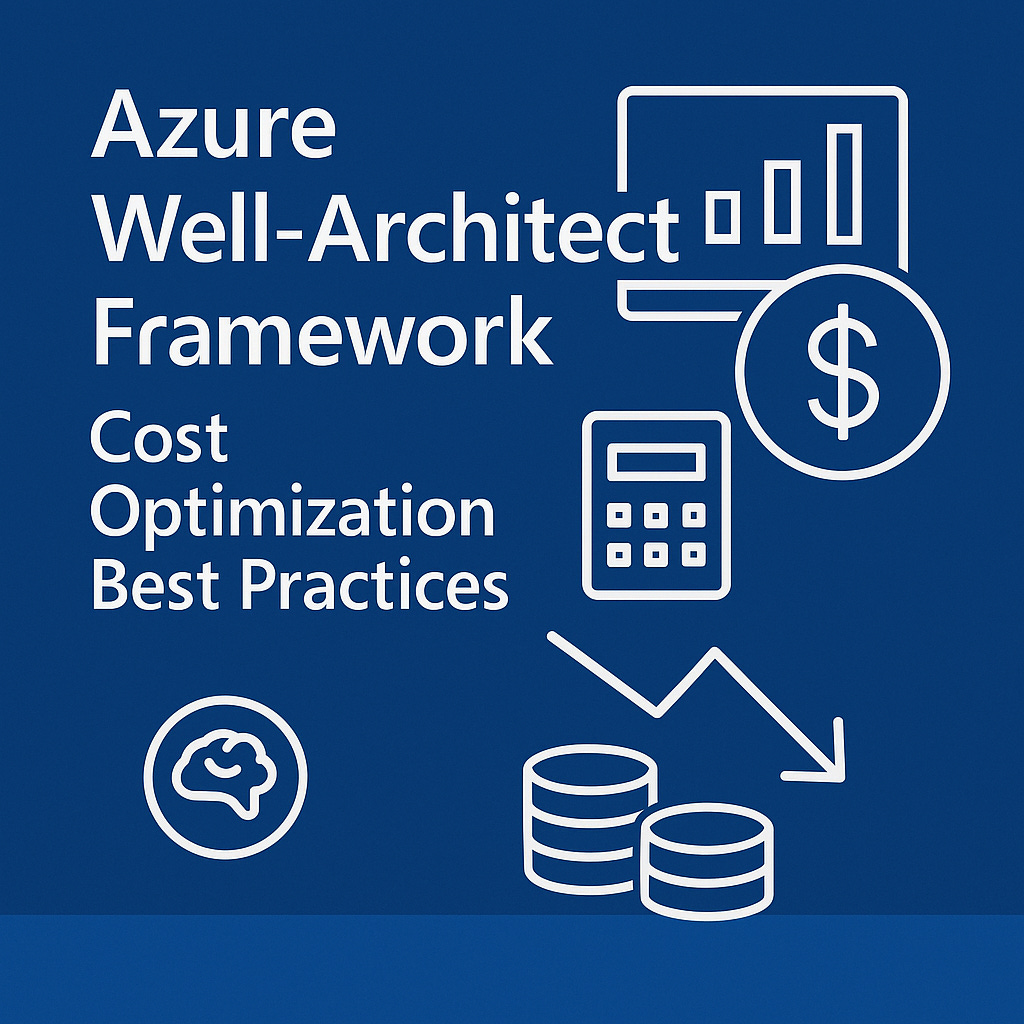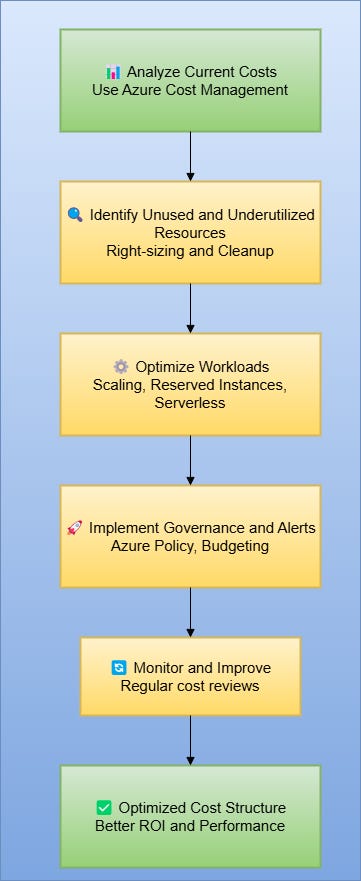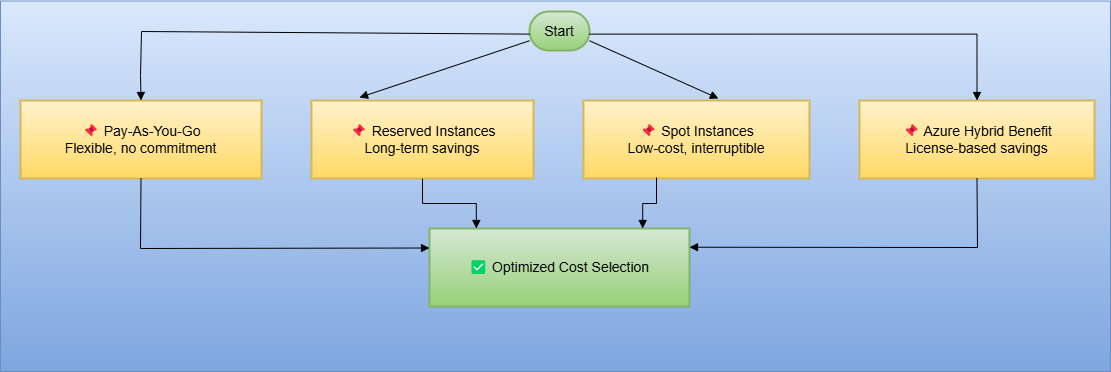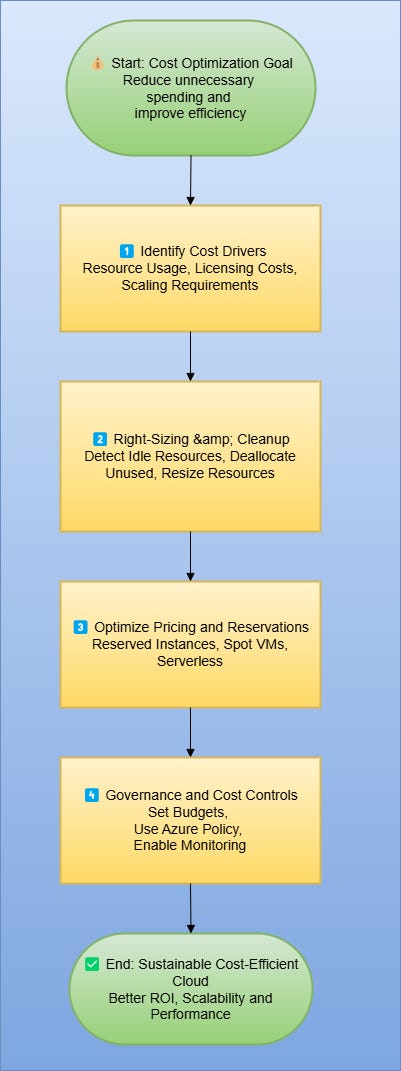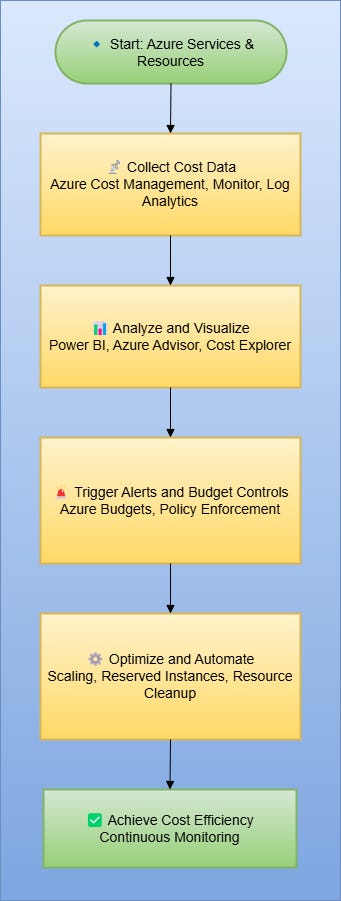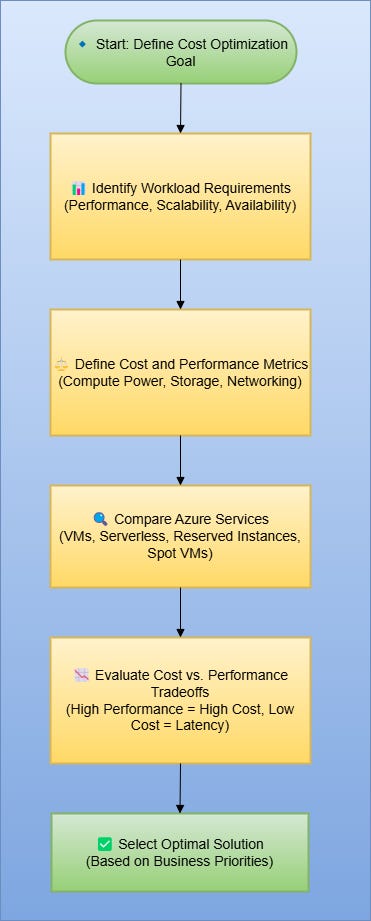Azure Well-Architected Framework: Cost Optimization Best Practices
Maximizing Efficiency While Minimizing Costs in Azure.
📢 Introduction
Managing cloud expenses efficiently while achieving business goals is a critical aspect of cloud governance. Cost Optimization within the Microsoft Azure Well-Architected Framework ensures that organizations maximize the value they deliver while adhering to financial constraints. This article provides an in-depth look at cost optimization strategies, design principles, tools, and tradeoffs that can help businesses effectively manage their Azure cloud expenditures.
🎯 Understanding the Importance of Cost Optimization
Cost optimization in cloud computing is not just about reducing expenses; it's about optimizing spending to align with business objectives. Without proper cost management, organizations may face budget overruns, unexpected expenditures, and financial inefficiencies. However, focusing solely on minimizing costs can introduce risks that may negatively impact performance, availability, and security.
📌 Key Goals of Cost Optimization:
✅ Eliminate unnecessary costs while maintaining performance.
✅ Enhance operational efficiency through better utilization of resources.
✅ Maximize return on investment (ROI) without sacrificing functionality.
✅ Implement governance to prevent cost overruns.
✅ Continuously monitor and refine cost strategies.
📌 A flowchart illustrating cost optimization workflows.
🏗️ Core Design Principles for Cost Optimization
The Azure Well-Architected Framework provides key cost optimization principles that guide organizations in effectively managing cloud expenses.
🏦 1. Develop Cost-Management Discipline
🔹 Establish a culture of cost awareness across teams.
🔹 Define a cost model to track expenses and forecast the total cost of ownership (TCO).
🔹 Assign clear accountability roles for financial responsibility.
🔹 Implement governance policies to prevent unnecessary spending.
🔹 Plan for additional costs like training, hiring, and infrastructure investments.
📊 2. Measure and Establish Initial Costs
🔹 Implement cost estimation tools to forecast expenses.
🔹 Consider ROI calculations when designing cloud architectures.
🔹 Understand pricing models and billing structures to avoid hidden costs.
📌 A comparison chart of different Azure pricing models.
💡 3. Optimize Usage to Reduce Costs
🔹 Regularly review and decommission unused resources.
🔹 Right-size compute resources using Azure Reserved Instances and Spot VMs.
🔹 Leverage serverless architectures to pay only for active usage.
🔹 Automate scaling to adjust workloads dynamically.
🔹 Use tagging and budgets for cost tracking and allocation.
🏆 Cloud Design Patterns for Cost Optimization
📌 An illustration showing the impact of different design patterns on cost efficiency.
✅ Cost Optimization Checklist
📌 An infographic with icons for different cost optimization strategies.
🔧 Azure Cost Optimization Tools
💰 1. Azure Cost Management + Billing
📌 Tracks cloud spending, allows budget enforcement, and provides forecasting.
🏗️ 2. Azure Advisor
📌 Recommends cost-saving optimizations for underutilized resources.
📈 3. Azure Pricing Calculator
📌 Estimates cost before deploying services.
🔍 4. Microsoft Azure Total Cost of Ownership (TCO) Calculator
📌 Compares on-premises vs. cloud costs for migration planning.
📊 5. Azure Monitor & Log Analytics
Provides real-time insights into high-cost operations.
📌An Azure architecture diagram showing cost monitoring tools in action.
⚖️ Tradeoffs in Cost Optimization
While cost optimization is essential, it must be balanced with performance, availability, security, and operational efficiency.
📌 A tradeoff matrix showing cost vs. performance trade-offs.
🏁 Conclusion
Cost optimization in Azure is an ongoing process requiring continuous monitoring, governance, and adaptation. By following the principles outlined in the Azure Well-Architected Framework, organizations can enhance financial efficiency while maintaining high performance and reliability.
💡 Key Takeaway: A well-architected Azure workload maximizes ROI, minimizes waste, and ensures a balance between cost, performance, and business objectives.
🔹 Regular cost reviews
🔹 Leveraging Azure's built-in tools
🔹 Fostering a culture of financial responsibility
📌 A final flowchart summarizing the cost optimization journey.
For a more in-depth discussion on Azure Cost Optimization, check out our podcast episode. We break down key strategies, cost-saving techniques, and practical implementation tips. 🎧 Tune in here
Happy Reading :)


